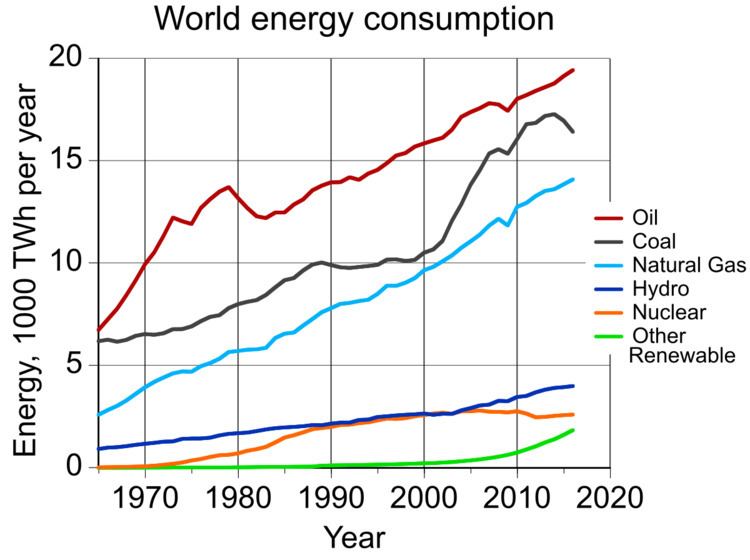 | ||
The energy mix is the group of different primary energy sources from which secondary energy for direct use - usually electricity - is produced. Primary energy in the form of fossil fuels is nowadays still mostly used directly for motor-driven vehicles, i.e. transport. Further energy conversion of the co-produced waste heat after burning is not possible.
In 2009, the global primary energy use corresponded to 12.5 million tonnes (12,300,000 long tons; 13,800,000 short tons) oil equivalent corresponding to 145,375 gigawatt-hours (523,350 TJ)). According to the International Energy Agency (IEA) 13,6% of that was used by the EU. Within the EU, 75.9% came from fossil fuels, 14.1% from nuclear energy, 7% from biofuels, 2.9 from renewable energy resources.
Overall primary energy consumption in the U.S. in 2015 relied most on petroleum (35 quadrillion British thermal units (3.7×1016 kJ)), natural gas (29×10^15 BTU (3.1×1016 kJ)) and coal (16×10^15 BTU (1.7×1016 kJ)). Renewables contributed 9×10^15 BTU (9.5×1015 kJ) and nuclear power 8×10^15 BTU (8.4×1015 kJ). In the same year, about 4 million GWh of electricity were generated in the U.S., 67% of which was generated from fossil fuels (coal, natural gas, and < 1% petroleum), 20% from nuclear power, 6% hydropower and 7% other renewables.
While the rise of global energy consumption with the global population growth cannot immediately be counteracted, the sustainability of growth can partially be improved by changing the energy mix towards renewables. The main forces in this process are national and transnational energy policy and the energy industry together with their lobbyists.
